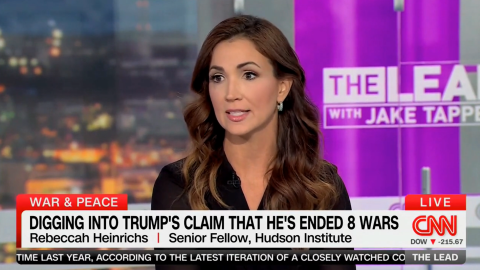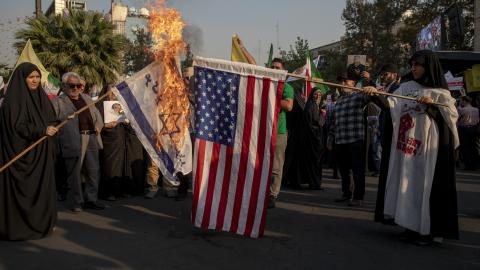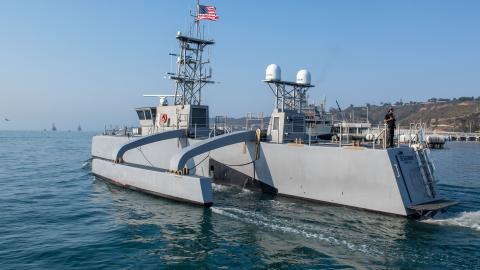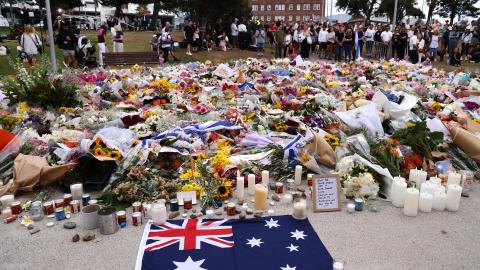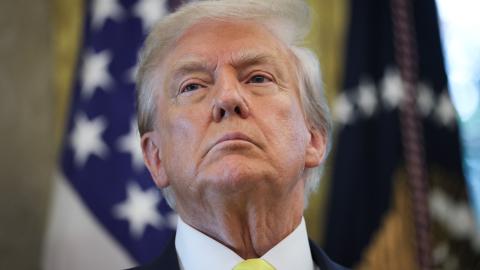At his meeting last week with United States Special Envoy Steve Witkoff, Russian president Vladimir Putin staved off impending US sanctions by proposing a path forward for Ukraine. Putin, in return for Ukraine’s withdrawal from the Donetsk region, reportedly agreed to pause the war across the front lines. President Donald Trump deemed Putin’s offer sufficiently noteworthy to agree to the Russian leader’s longstanding request for a presidential summit.
“We’re going to get some back, and we’re going to get some switched,” Trump revealed on Friday. “There’ll be some swapping of territories to the betterment of both.” What exactly that may entail is unclear. But after sitting down with his European counterparts over the weekend, Vice President JD Vance, echoing his past assessment that Moscow is “asking for too much” by claiming areas it has not yet captured on the battlefield, appeared to pour cold water on the prospect of Ukraine walking away completely from Donetsk. Instead, Vance set expectations that territorial control would be set at “the current line of contact,” and in line with “some negotiated settlement that the Ukrainians and Russians can live with.”
Given Putin’s determination to impose his will on Ukraine—a determination he reiterated as recently as this month—President Trump is wise to avoid letting Russia set the table at the upcoming presidential talks. In the coming days, the Trump administration should consider supplementing its current statements with several counterproposals.
For starters, President Trump should invite Ukrainian president Volodymyr Zelensky to Alaska, a step he has reportedly contemplated. After months of shuttle diplomacy at the beginning of President Trump’s term, the United States encouraged Russia and Ukraine to hold a series of bilateral talks, which began in May. A negotiation involving Putin and Zelensky, facilitated by Trump, would follow logically from this effort. Such a move would also calm nerves in Kyiv and lower the odds of a spat between the United States and Ukraine as talks in Alaska unfold.
Second, the United States would do well to recognize the importance of military terrain in any discussions of land swaps. For example, the military strongholds of Pokrovsk and Kramatorsk in Donetsk are important to Ukraine’s overall military posture. The cities are key pillars in the defense architecture that protects Ukraine’s central heartlands. Ukraine would only withdraw from these positions voluntarily if it is offered ironclad security guarantees, on a par with membership in the North Atlantic Treaty Organization (NATO), from the West.
Third, the United States should make clear to the Kremlin that while it will accept Russia’s de facto control over parts of Ukraine, it will not offer Moscow de jure recognition of those areas. At first blush, this may seem like a minor distinction. But as Kyiv made clear during earlier discussions over the status of Crimea, Ukraine will fight tooth and nail over any land swap that could be interpreted as codifying the permanent loss of its towns or cities. Moreover, formal US recognition of Russian control over Ukrainian territory may embolden Putin to attempt other land grabs in other former Soviet states, some of which are now NATO allies.
Fourth, any ceasefire should include guarantees of safe passage for Ukraine’s civilians. Reports from occupied Ukraine are uniformly horrific and detail widespread executions, the torture of civilians, and the abduction of children. In some areas, Russian drone units have engaged in what have been described as “human safari” hunts. Under the terms of any ceasefire, Ukrainians living under occupation should be offered an opportunity to pass into Ukraine-controlled territory.
Fifth, the United States should not only reject any restraints Putin seeks to place on the Armed Forces of Ukraine (AFU) but also actively support the reconstitution of the AFU. The AFU is Ukraine’s only existing security guarantee; as such, any limitation on its size and scope would be, for Kyiv, akin to suicide. To maintain the peace after a ceasefire, Ukraine will need to resemble a porcupine: defensive in nature but vicious if attacked and painful to swallow. To undergo this transformation, Kyiv will need the freedom to purchase liberally from Western arms markets, likely with European financing, for munitions such as Taurus missiles and Eurofighter Typhoon fighter jets.
Sixth, as part of any ceasefire, the United States should push for limitations on the size and scope of Russian forces in or around the newly occupied territories. Three years into the war, Russia’s economy and society are highly militarized. The West will need an early-warning system to detect any Russian attempts to resume hostilities. Similarly, the United States should insist that North Korean troops in Russia, reportedly numbering in the tens of thousands, return home.
Seventh, the United States should back European efforts to deploy a reassurance force into Ukraine. The scope of this force could depend on Russia’s willingness to pull back its own troops from the newly occupied territories. Although the line of contact in Ukraine is hundreds of kilometers long, possible assault axes are concentrated along several key zones. If Russia ever considers breaking the ceasefire, a reassurance mission comprising British or French soldiers stationed near vital sectors may give Russia pause. To date, Europe’s willingness to assemble a meaningful reassurance force has been limited. But the upcoming discussions in Alaska could breathe life into such efforts.
Eighth, the United States should employ its economic toolkit in the service of coercive diplomacy. Putin clearly fears stronger US sanctions, which would exacerbate Russia’s already considerable economic problems. Trump should make clear to Putin in Alaska that the price of walking away from discussions or violating a US-brokered deal in the future would be economic warfare on a scale not yet seen. Moreover, if the United States decides to dangle sanctions relief before Putin as part of a settlement, that relief should be staggered and probationary at a minimum.
As Putin packs for the meetings in Alaska, the Russian military is cutting across key Ukrainian lines of communication in the eastern part of the country. The stark discrepancy between the Kremlin’s professed offer of a ceasefire and the Russian military’s inch-by-inch push for more territory raises questions about Putin’s true motives. Putin will arrive in Alaska armed with a raft of talking points meant to weaken Ukraine’s position, ensure his own flexibility, and avoid US sanctions. Adopting guidelines of his own ahead of the summit will help President Trump strengthen his negotiating position and set the stage for the meeting to be a success.


